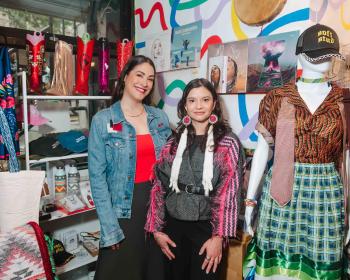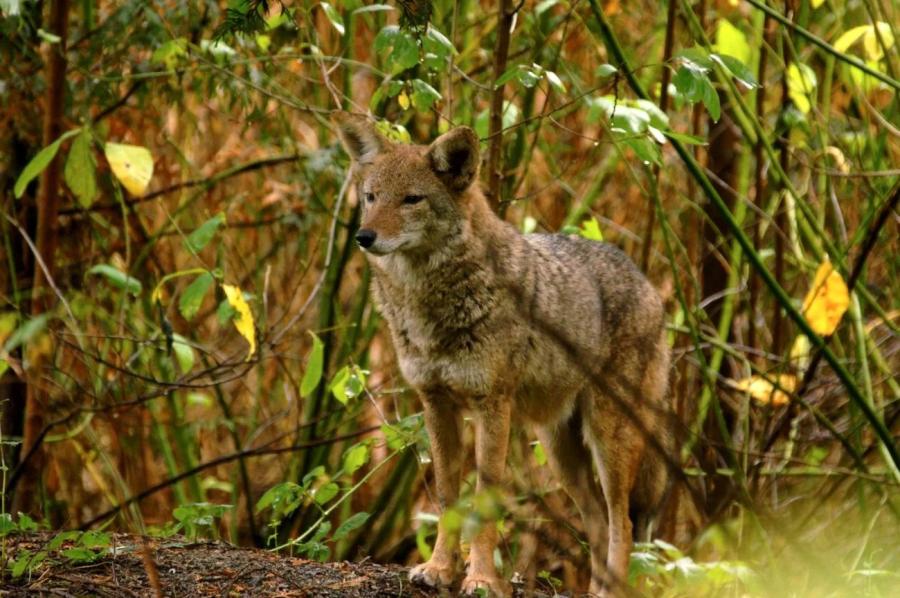Chief Nancy Lyons has a vision: a “reverse boarding school” that will restore to her Koasek Abenaki Nation their language, ceremonies, history, foods and agricultural methods, and traditional basketry and other crafts. She calls it the Koasek Cultural Academy. In the four months since the Koasek named her chief, along with co-chief Brian Chenevert, she has earned enthusiastic support from her people as well as from outside communities. The town government of Haverhill, New Hampshire, will be sponsoring the Nawihla Native American Festival, and New Hampshire and Vermont state arts councils are also interested in support. The town of Newbury, Vermont, is negotiating an agreement to purchase the former Wells River Elementary School with a federal grant. Between those developments and Vermont’s recognition of the Abenaki in May (see p. 5) Lyons is convinced that the Koasek Cultural Academy was “meant to be.”
According to Missiqoui Abenaki historian Fred Wiseman, until 2006 it was official Vermont state policy that modern-day Abenakis were “genealogical frauds.” For Nancy Lyons, that policy belied everything she learned as a child. Lyons was raised by her two grandmothers, who kept the old ways by always opening their homes and hearts to other Abenaki in need. She lived with her great-grandmother, Flora Hunt, a Koasek medicine woman who, even after becoming blind in her old age, knew where to find ginsing and other traditional medicinal plants. Their basement was crammed with butternuts that her grandmothers ground to make cookies and cakes, and with maple syrup made from the sap she helped her grandfather harvest and transport by sleigh.
Lyons’ childhood was filled with mystery and wonder. She remembers a time when she was eight or nine when a light bulb in the ceiling unscrewed itself and a ray of light circled clockwise around the room. Sitting at the kitchen table, her grandmother announced that her grandfather had just passed over. The light bulb then went back on and a moment later the phone rang. It was the local hospital calling to inform her grandmother of her husband’s death.
One of Lyons’ chores as a child was to take down and comb her great-grandmother’s waist-length hair. It was during those intimate moments that her great grandmother taught her the values she lives by today: to take care of others, especially those who are sick or in need; to be thankful; to pay attention to and interpret her dreams; and to do everything she does in life from the heart. As her great grandmother lay dying, Lyons promised her that when she grew up she would find her people and help them. “That has been the drive behind everything I have done in my lifetime,” Lyons told me.
Vermont’s attitude towards the Abenaki mirrored that of the U.S. Bureau of Indian Affairs. Lyons calls it the “cookie-cutter approach” to who is an Indian. If a tribe could not demonstrate that it had a centuries-old governance structure that approximated the American model of government, its members were not Indians. There was no leeway in this policy for New England bands whose lands were stolen in the eighteenth century, who had to hide from the Ku Klux Klan and other racists who discriminated against Indians in the nineteenth and twentieth centuries, and whose children had been forced to attend boarding schools where they were beaten for speaking their native languages.
Like other New England tribes, the Koasek, whose traditional lands straddled the Connecticut River between modern-day Vermont and New Hampshire, adapted by appearing to assimilate. In public they wore Western clothes and acted like whites. Only at home did they let down their hair and express their indigenousness with relatives and other tribe members. Under such circumstances, continuous formal governance structures were impossible to maintain.
But they were not forgotten. Koasek culture has never been static. Ancient carving tools found by archeologists in Jefferson, New Hampshire, suggest that Abenaki people lived there in permanent settlements some 8,000 years ago. More recent archeological evidence suggests that the Abenaki were good at adjusting to changing circumstances. When faced with climatic, political, or other pressures, they split into small bands and took up migratory lifestyles, but regrouped in settled seasonal communities or permanent villages when doing so was advantageous. Governance structures shifted depending on the needs at any given time, but there were always chiefs (often more than one in a band or tribe) who were entrusted with looking after the needs of their people.
Lyons’ journey to tribal leadership began at 19 when her first child was born with hemophilia and, to juggle caring for him and earning a living, she took a job in a hospital. It was there that she first learned about the health and psychosocial problems that plague Native American communities. A friend told her about a group called the White Bison Organization that combined the teachings of support groups for adult children of alcoholics with Native American traditions, and Lyons felt she had found her calling. “I was sitting at a table, and a ray of sunlight came through the window. I felt something like an electric shock zap through my body and clearly saw the image of my grandmother, who reminded me of the lessons from my childhood.”
Lyons has been on a roll ever since, notwithstanding the birth of two more children and the death of her oldest, at 21, from AIDS that he contracted from a tainted blood transfusion to treat his hemophilia. She spent time as a volunteer at Ganigonhi:yoh, an Onondaga Nation healing place that provides a broad array of healing services free of charge to Native Americans. There she learned about “historic trauma,” and came to understand the issues around language loss and diabetes, and how alcoholism was used by the United States as a weapon against indigenous peoples.
Later Lyons spent several months helping Mohawk chief Tom Porter manage Kanatsiohareke, a language- immersion, cultural-education, and community-support center located on Mohawk traditional lands in Fonda, New York.
Her most important mentor was Chief Homer St. Francis, of the western-Vermont-based Missiquoi/Sokoki Abenakis. It was Chief St. Francis who led the charge to persuade Vermont to change its policy towards the Abenaki. In addition to helping him, Lyons turned her sights on persuading New Hampshire to do so as well. She complemented Chief St. Francis’ confrontational style with her natural diplomacy and with the patience to educate those with the power to bring about change. Chief St. Francis died just months before his dream of recognition was realized, but it lives on in his daughter April St. Francis, who succeeded him as Missiquoi/Sokoki chief, and in Fred Wiseman, Lyons, and other Abenaki leaders.
Lyons says she was surprised when the Koasek asked her to be their leader. Everyone knew that Brian Chevenert was being groomed to be chief by his predecessor. But Chevenert was young and had a growing family and a good job in Massachusetts. When the old chief died, he was not sure he was ready for the full role, which in Koasek culture is a lifelong responsibility. So, after much consultation, the community decided Lyons was the perfect person to be co-chief with him.
I asked Lyons whether there was any community resistance to having a woman as co-chief. She seemed surprised by the question, and said she’d heard of none among the Koasek, even though, as far as she knows, she is the first female Koasek chief, just as April St. Francis is the first female chief of the Missiquoi/Sokoki. She did hear reports of raised eyebrows among the kin of her Haudenosaunee husband Howard Lyons, but the Six Nations have a very different governance structure, one that is divided among male chiefs and female clan mothers. A female chief was a new concept for them, but once they thought about it they admired the fact that a woman had stepped up to the plate.
For Lyons, recognition by Vermont is just another step on the path to the revitalization of the Koasek Nation. Like Chief April St. Francis, she looks forward to the day when the United States government will recognize her people. But more importantly she looks forward to the day when her own people can recognize and enjoy all dimensions of themselves, their culture, and their community as a native people. That’s what she believes the Koasek Cultural Academy will accomplish.
Lyons’ next hurdle is to raise the $300,000 it will take to complete the purchase and rehabilitate the elementary school campus for use as a Cultural Academy. But even as she is out fund raising, she also is finding other ways to strengthen her community. Next June, the Koasec will host the Nawhihla Cultural Week and Pow Wow on their traditional ceremonial grounds in Haverhill. “Nawihla” is a Koasec word that means “I am returning home.” While about three-quarters of registered tribal citizens still live in the vicinity of their traditional lands, the word means more than just returning to a place. As Chief Brian Chenevert put it, “This is truly a celebration of thanks that our people can once again walk, dance, and sing in our ancestor’s footsteps.”
—Ellen L.Lutz is the executive director of Cultural Survival
Editor’s Note: The Women the World Must Hear department will appear in each issue of Cultural Survival Quarterly and will profile indigenous women who are making a difference their communities and in the world.


